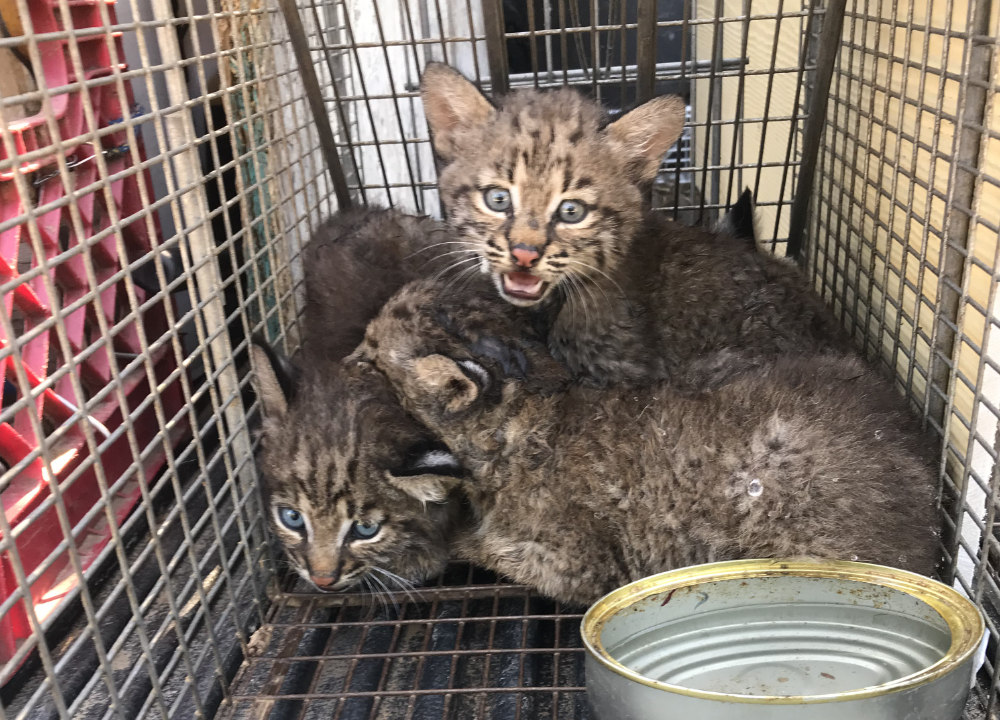Rounded and dense scat left on trails and the sides of roads is one sign of a bobcat. They will also scrape the ground next to their scat to cover it or as an independent scent-marking, and you might recognize their tracks by the four toes and large heel pads. One last sign of a bobcat for those with keen eyes are the kidney-shaped depressions left on the ground in steep areas where they sleep during the day.

Whatever the signs, bobcats can be bad news for property owners concerned for their pets and livestock.
Bobcats and Livestock
With a range extending from northern Mexico through most of the continental United States, bobcats are an adaptable predator that can thrive in a variety of ecological systems—including near human residences. Sometimes twice the size of house cats, bobcats prey on a variety of smaller creatures. While they prefer woodchucks, rabbits and hares, they have also been known to hunt domestic cats and small dogs, poultry, sheep and goats. Thankfully, attacks on humans are rare, though you should never approach one.
Bobcat Trapping and Removal
Bobcats are easier to trap than coyotes and foxes. But these are potentially dangerous animals, and trapping should under no circumstances be attempted by anyone other than a trained and licensed professional.
AAAC Wildlife Removal specialists possess all the necessary permits and qualifications to take care of your bobcat problem.
Bobcat Exclusion
Your wildlife technicians will make recommendations on the proper ways to exclude intrusion by bobcats on your property.
Wire enclosures are the best way to discourage bobcats, as they can climb wooden fence posts and structures that give them a footing. Also think about adding overhead woven wire fencing, as they can jump up to 6 feet. Loud noises such as barking dogs and music, and lighting such as flashing or continuous white light could also act as temporary dissuasion at night. Also, consider removing any cover on your property such as shrubs and rocks between your property limits and livestock enclosures.











